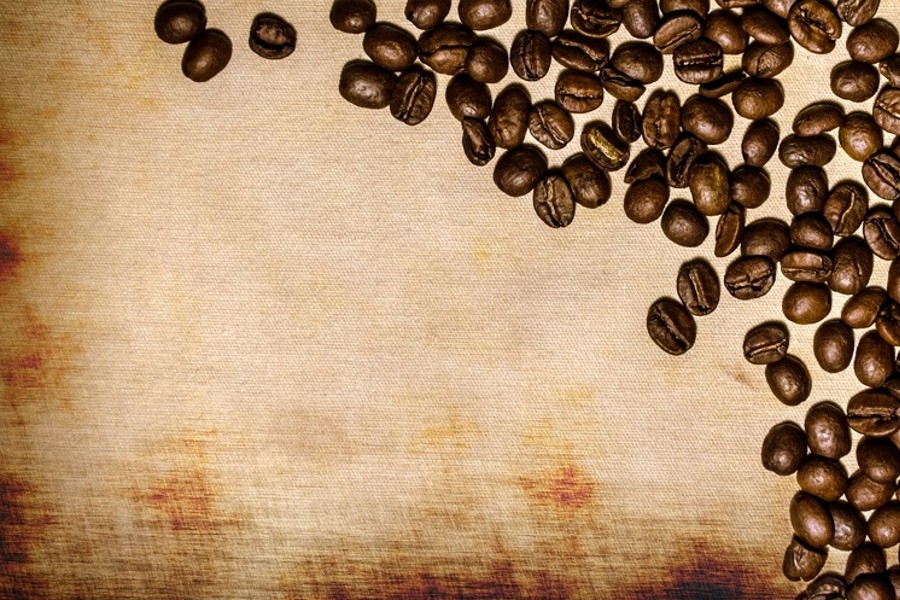
Coffee roasting is a heat process that transforms the chemical and physical properties of green coffee beans into roasted coffee products.
The roasting process is crucial as it influences the flavor, aroma, and color. It involves roasting the coffee beans at high temperatures, where they undergo several chemical reactions that develop their rich flavors and aromas. The duration and temperature of the roasting process determine whether the beans become medium-roast coffee, dark-roast coffee, or any other roast level. Each type of roast has its unique profile and appeals to different palates.
Characteristics of Medium Roast Coffee
Flavor Profile of Medium Roast
Medium roast coffee strikes a harmonious balance between the inherent flavors of the bean and the effects of roasting. It generally presents a more balanced flavor, aroma, and acidity than either light or dark roasts. Typically, medium-roast coffee beans exhibit a brown color with no oil on the surface. These beans are roasted to a point where their unique characteristics begin to shine through, highlighting the coffee’s origin with flavors ranging from fruity to nutty or spicy, depending on the source of the beans.
Popular Medium Roast Coffee Beans
Some of the most beloved beans come from regions like Colombia, Ethiopia, and Guatemala. These regions are known for their rich soil and ideal coffee-growing climates, which contribute to the beans’ complex flavors. Colombian medium roasts often have a slight caramel sweetness with nutty undertones, while Ethiopian beans might carry floral and berry notes, showcasing the diversity available within medium roasts.
Best Practices for Brewing
Brewing methods like pour-over, drip, or Aeropress are recommended. These methods allow for better control over the brewing time and temperature, which is crucial for extracting the coffee’s full spectrum of flavors without overshadowing its natural qualities. The grind size should be medium, similar to sea salt, to ensure an even extraction and prevent the coffee from becoming too bitter or sour.
Characteristics of The Best Dark Roast Coffee
Defining the Bold Flavor of Dark Roast
It is recognized for its bold, rich, and often intense flavor profile. As the beans are roasted past the second crack, the sugars fully caramelize and the oils are brought to the surface, which imparts a glossy, sometimes almost black appearance. This roasting level typically produces coffee with flavors of chocolate, nuts, or even a hint of smokiness. The inherent flavors of the best dark roast coffee beans are often overshadowed by these strong roasted notes, making it a favorite for those who prefer a hearty, robust cup.
Brewing Techniques Suited for Dark Roast
With its robust and flavor-dense profile, it pairs well with specific brewing methods that enhance its strength and richness. Here are several techniques that are particularly effective:
- French Press: The immersion brewing allows full contact between the water and coffee, extracting deep, rich flavors. Use a coarse grind and brew for about four minutes.
- Espresso: Ideal for dark roast whole bean coffee, the high-pressure brewing of espresso machines extracts the intense, concentrated flavors of dark roasts very efficiently.
- Cold Brew: This method is excellent for reducing the perceived bitterness while enhancing the smooth, chocolaty notes of dark roasts. Brew ground coffee in cold water for 12 to 24 hours.
Additionally, when brewing medium-dark roast coffee, it’s important to consider the grind size and water temperature. A coarse grind works best for methods like French press and cold brew to prevent over-extraction, which can lead to bitterness. Water just off the boil, around 195°F to 205°F, is optimal as it extracts the flavors effectively without burning the coffee. Adjusting these variables can help you maximize the enjoyment of your dark roast, turning each cup into a delightful experience.
Comparing Medium Roast to Dark Roast
Taste Comparison
When comparing medium roast vs dark roast coffee, it’s essential to consider their distinct taste profiles. Medium roasts offer a balanced flavor, highlighting both the natural characteristics of the coffee and the subtle changes brought by roasting. These coffees often have a pleasant level of acidity, nuanced flavors ranging from fruity to nutty, and a satisfying aftertaste. In contrast, dark roasts provide a bold, robust flavor dominated by deeper, smokier notes. The longer roasting process diminishes the bean’s original flavors and acidity, instead emphasizing rich, chocolaty, or molasses-like tones. This makes dark roasts particularly popular among those who appreciate a hearty, pronounced taste in their coffee.
Roast Level on Caffeine Content
A common misconception is that dark roasts contain more caffeine due to their intense flavor. However, the truth is quite the opposite. The roasting process burns off caffeine, so light roast vs dark roast often means that lighter roasts retain more caffeine. Medium roasts strike a middle ground, offering a moderate caffeine level that is perfect for those who enjoy coffee’s stimulating effects without the intensity of a light roast.
Organic Coffee Benefits
Environmental Impact
The environmental benefits of organic coffee farming are significant and contribute positively to the planet’s health. Here’s a breakdown of how these practices make a difference:
- Reduced Chemical Use: Organic farms do not use synthetic pesticides or fertilizers, reducing the amount of chemical runoff into local water supplies and soil, which helps maintain biodiversity and prevents water and soil pollution.
- Preservation of Local Ecosystems: Organic coffee is often grown under shade trees, which supports local wildlife habitats and maintains bird populations, crucial for pest control and seed dispersal.
- Enhanced Soil Integrity: Organic practices include crop rotation and other soil management techniques that prevent erosion, improve soil fertility, and increase the soil’s water retention abilities.
The focus on natural processes and reduced impact on the ecosystem ensures that coffee production can be sustainable and beneficial for all involved—from the farmer to the final consumer. This is particularly critical in regions vulnerable to the effects of climate change and industrial farming practices, making organic coffee a responsible choice for the future.
For coffee enthusiasts exploring their preferences, consider starting with a medium roast to appreciate the inherent flavors of the coffee beans. If you find yourself enjoying sharper, more pronounced tastes, gradually shift towards darker roasts to experience their rich, bold qualities. Additionally, experimenting with different brewing techniques can help reveal the full potential of each roast type, from the subtle nuances of a medium roast coffee in a pour-over to the intense depth of a dark roast coffee in an espresso shot. Always look for quality beans, ideally organic dark roast coffee or sustainably sourced medium roasts, to ensure that your coffee indulgence is not only delicious but also ethically produced. Embrace the diversity of coffee and let your palate guide you through the wonderful world of roasts.
Photo credit: HWM.
Become a Harlem Insider!
By submitting this form, you are consenting to receive marketing emails from: Harlem World Magazine, 2521 1/2 west 42nd street, Los Angeles, CA, 90008, https://www.harlemworldmagazine.com. You can revoke your consent to receive emails at any time by using the SafeUnsubscribe® link, found at the bottom of every email. Emails are serviced by Constant Contact








